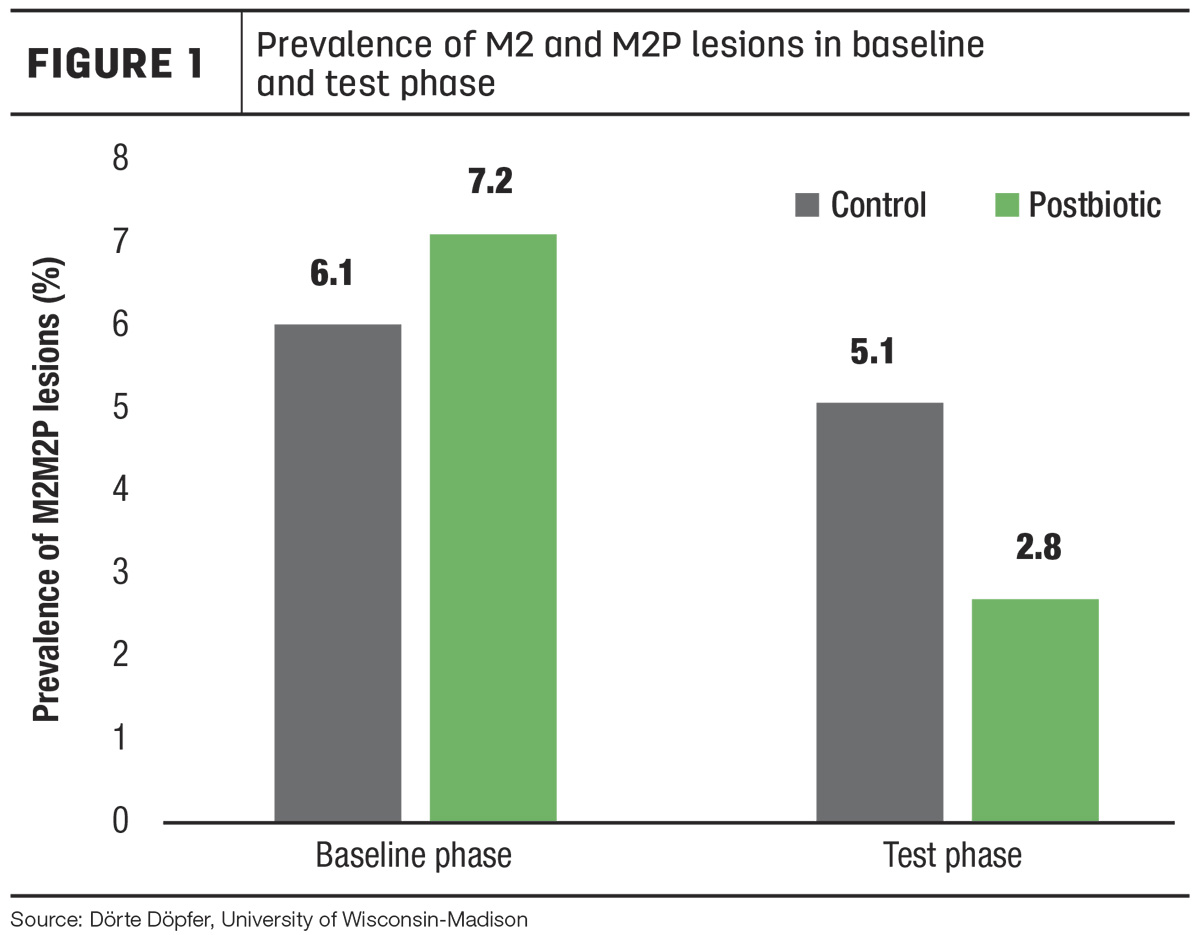Digital dermatitis (DD), also known as hairy heel warts, is a highly contagious bacterial infection affecting the skin of the hooves, primarily the rear feet of dairy cattle. It is characterized by painful lesions, redness, swelling and foul-smelling discharge. The condition not only causes discomfort and lameness but also results in reduced milk production and decreased fertility, thereby posing significant economic losses to producers. According to research in 2015, DD is estimated to cost the U.S. dairy business $1.1 billion at a moderate prevalence of 25%. With inflation factored through 2023, this cost rises to approximately $1.4 billion.
Prevalence of DD within a herd can be as high as 80%, and 95% of large dairy operations report cases of the infection. Lameness, often a result of DD, is a significant contributor to involuntary culling, which in turn decreases the productive life of dairy cows. Keeping cows productive as long as possible is critical for improving both the economic health and sustainability of a dairy operation. A variety of pressures, such as lameness, constantly chip away at the average age of a herd, often preventing animals from reaching the break-even point where they have earned back their heifer-raising costs. Moving toward a productive life model ensures that the most promising heifers mature into older cows that remain healthy and productive through multiple lactations.
Prevention is key
Implementing preventive strategies is essential to reduce premature culling and extend the productive life of older cows. To combat DD effectively, a comprehensive management approach is required.
Creating a comfortable and conducive environment for cows is crucial in preventing DD. Providing adequate shade, proper ventilation and cooling can help alleviate heat stress. Additionally, maintaining clean and dry walking surfaces reduces the risk of infection and minimizes the spread of bacteria associated with DD. Limiting the time cows spend standing on hard surfaces, such as in the holding area, and installing rubber flooring in certain areas can also be beneficial. Stalls should be clean, dry, comfortable and spacious enough for cows to stand up easily, and avoiding overstocking barns can reduce increased standing time.
Proper nutrition
Diet plays a crucial role in maintaining cow health and immune function. A well-balanced and properly formulated diet supports rumen health and optimizes the cow's ability to combat lameness challenges, including DD. Ensuring an adequate supply of high-quality forage and balanced mineral supplementation and maintaining optimal rumen pH through careful ration formulation can positively impact hoof health. Incorporating proper feed additives such as a postbiotic product can help stabilize the rumen, enhance microbiome populations, support gut integrity and maintain intake and digestion, providing more available energy to the animal. Ultimately, this can result in greater profitability on the farm. Consultation with a professional nutritionist can aid in adjusting the diet to ensure adequate rumen function, which contributes to overall hoof health and resilience against diseases.
The impact of lameness on productive life
A study under the direction of Dr. Doerte Doepfer of the University of Wisconsin – Madison evaluated the effects of a postbiotic on the prevention and control of DD in lactating dairy cows within a commercial dairy farm in the Midwest. The controlled field study involved 968 cows randomly assigned to four study pens at a Holstein dairy farm of 3,000 milking cows. The study was conducted from June to November 2018, with the first 12 weeks designated as baseline observations and the last 12 weeks as test observations. DD image data were captured every two weeks with GoPro cameras stationed at robotic milking units, resulting in 6,920 observations.
Lesions scores are defined as follows in order of least to most severe: normal healthy (M0), chronic stage with a thickened epithelium (hyperkeratosis, M4H), chronic stage with proliferative growth of epithelium (M4P), active ulcerative or granulomatous skin with diameter greater than 2 centimeters (M2) and active ulcerative with proliferative growth (M2P). Scores were grouped as healthy or contained (M0M4H), chronic lesions (M4P) and active lesions (M2M2P).
The study found that cows supplemented with a postbiotic had a slower progression of severe digital dermatitis lesions compared to the control group (Figure 1). Although the overall prevalence of DD was not significantly altered, the odds of developing severe lesions (M2M2P) were reduced by 1.8 times in cows supplemented with a postbiotic. Enhanced protection from DD through postbiotic supplementation is advantageous for the longevity, performance and well-being of dairy cattle.

Conclusion
DD presents a significant challenge for the dairy industry, affecting the well-being and lifetime productivity of cows. By implementing effective management strategies, such as maintaining optimal hygiene, following proper footbath protocols, early detection and treatment, as well as adjusting the diet to support rumen health, dairy producers can minimize the occurrence and severity of this disease. Through proactive measures and a comprehensive approach, the impact of DD on cow health and performance can be effectively managed, leading to improved animal welfare, enhanced productivity in the dairy sector and a more productive life for cows.










